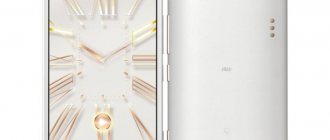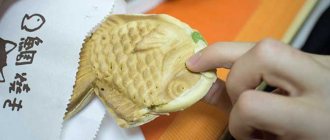Home / Articles
December 29, 2010
Author: Dmitry Samochernov
What is traditionally popular among visitors to Tokyo besides temples and skyscrapers? That's right, shops! And if girls for the most part prefer clothing supermarkets, then the male half is drawn to electronics stores. Huge, six or more floors high, you can wander around for hours.
First, let's look at general questions about Japanese electronics. There is an opinion that in Japan you can buy almost everything and very cheaply. This is not entirely true, but, in any case, the choice is an order of magnitude greater than in Russia. Many different products are sold only in Japan and do not officially enter the Russian market, and if they do, it is with a significant delay. What in Russia can only be bought to order is always on the shelves in Japan. In fact, electronics stores are more like hardware stores - they sell everything from headphones and cameras to refrigerators and heaters.
As for prices, in general they are lower than in Russia, but this value greatly depends on the specific product and the manufacturing company. For example, Sony products in different countries do not vary much in price, but Panasonic products in Russia are significantly more expensive. In particular, the recommended price for our country for the Lumix GH1 camera is almost 70,000 rubles, and in Japan the same kit can be found, in rubles, for 26,000 - the difference is almost three times!
Cell phones stand apart. With all the variety of choices, they won’t sell them to you without connecting, and you can only connect if you have a visa valid for over 90 days. A large article has already been written about purchasing cell phones, connecting to operators and tariffs.
Japanese quality
Although Japanese corporations (as mentioned earlier) produce many different types of goods, there is one aspect that unites them all. Whether the Japanese produce mobile phones or lipstick, the ultimate goal is to create a quality product. Quality is the main reason for the incredible success of products made in Japan.
The market is structured in such a way that consumers are willing to pay more for a product if they are confident in its quality. This is exactly what happened with Japanese products. When people realized that goods from Japan could last for quite a long time, the high price of products no longer scared off potential consumers. Thus, we can safely equate Japanese goods with high quality.
Beware, Japanese technology!
When purchasing equipment in Japan, you need to pay attention to three facts. The first is the opportunity to work in Russia. As you know, the electrical voltage in Japan is 100 volts, and in Russia it is 220 volts. Almost all modern equipment has universal power supply, i.e. operates in the range of 100-220 volts, but there may be exceptions (for example, electric heaters or battery chargers). Therefore, be sure to look at the labeling before purchasing. The second fact is the shape of the electric plug, in Russia there are round pins, and in Japan they are flat, that is, you will need an adapter. And the third fact is the menu in cameras, etc. often ONLY in Japanese, without the possibility of changing even to English. Check everything before purchasing! And one more important note: when purchasing a new product in Japan, you will definitely be issued a warranty card for the equipment, but in Russia, alas, it will not be valid.
Cloth
Japanese clothing brands are extremely popular among fashionistas from around the world. The thing is that the special philosophy of life of the Japanese is expressed in their fashion trends. Basically, Japanese clothing is characterized by straight lines, clear silhouettes, a predominance of conservative colors and the absence of any vulgar elements.
For the first time on the world stage, designers Miyake and Kenzo announced the existence of Japanese fashion. A distinctive feature of their collections was that they actively used paper, iron and rubber in tailoring. The followers of the above-mentioned designers in the early 90s of the last century were Rei Kawakubo and Yohji Yamamoto. These designers immediately managed to captivate the Parisian audience with their collections of women's and men's clothing.
Currently, the list of world-famous Japanese designers and fashion designers is not limited to four names, and the number of popular Japanese clothing brands can impress even the most sophisticated fashionistas. The most popular clothing manufacturers from Japan are the following companies:
- Remi Relief.
- KiNoe.
- Uniqlo.
- Toga.
Another brand that deserves the attention of the public is Anrealage. It was created by young designer Kunihiko Morinaga. His collection is considered quite daring for his country, as it is based on abstract prints and bright colors. However, it is in high demand in the global fashion market.
Cosmetics
As you know, girls and women in Japan pay quite a lot of attention to their appearance, and when it comes to hair and skin care, Japanese women become as scrupulous and attentive as possible. To satisfy their requirements, Japanese cosmetics manufacturers try to combine modern scientific achievements with centuries-old traditions in their products. They actively use extracts of medicinal herbs, the power of which has been tested for centuries.
Therefore, it is not surprising that Japanese cosmetics brands are in demand among modern consumers. Women in many countries are willing to pay a lot of money to be beautiful and healthy. Japanese cosmetics allow them to achieve these goals. The top 5 Japanese cosmetics brands will look like this:
- Shiseido.
- Kanebo.
- Naris Cosmetics.
- MoltoBene.
- Pola.
As for Shiseido, this brand is considered the most popular in Japan and in the world. A distinctive feature of this brand is that the product recipe and production technology are kept in the strictest confidence. Brand manufacturers try to pursue a broad pricing policy, as a result of which you can find both luxury creams and products that are more accessible to the general consumer. It is important to note that Japanese cosmetics manufacturers try not to use chemicals or any of their compounds in their products.
The decline of the Japanese electronics industry
In 2004, Kameyama, a city of 50,000 people in central Japan, began to boom when Sharp Corporation began producing liquid crystal panels there.
Sharp took the industry lead with a 22 percent market share in LCD televisions and invested $6.6 billion in Kameyama, building two state-of-the-art factories and creating 3,000 jobs. Agricultural land was converted into residential land, and workers in their 20s came from as far away as Brazil. Sharp's taxes made it possible to renovate the train station and build a new, state-of-the-art school.
But Samsung Electronics Co began to compete aggressively, and this led to lower prices. Prices for 40-inch LCD panels fell from $2,700 in early 2004 to $1,300 in 2005 and continued to fall until they reached $250 earlier this year. Samsung has steadily increased its market share, to 29 percent in 2012 from 10 percent in 2004.
Sharp was unable to compete, and its market share dropped to 5 percent. The company cut jobs and workers left Kameyama, leaving behind a desert. The company last month mortgaged the plants along with most of its properties, including its Osaka headquarters, in exchange for 360 billion yen ($4.6 billion) in loans just to stay afloat.
Japan's electronics industry is in crisis. Sharp, Sony and Panasonic collectively lost more than $20 billion last year and are cutting tens of thousands of jobs. Cutting-edge technology, a competitive advantage for Japanese manufacturers, no longer matters as much as consumers increasingly focus on content, apps and convenience rather than quality hardware. The rise of the yen to a record level against the dollar in 2011 also added to the problems.
Apple, Samsung
"Japan's electronics industry is very similar to the US auto industry in the past," said Makoto Kikuchi, chief executive officer of Myojo Asset Management Japan Co. “They think people will buy their products, but they don't focus on what consumers really want, i.e. good quality at a reasonable price.”
Sony, Sharp and Panasonic now have a combined market capitalization of about $29 billion, down from Sony's peak of $120 billion in 1999. At the same time, Apple's market capitalization is $596 billion, and Samsung's is $175 billion.
Sony slipped to 40th place in Interbrand's ranking of the world's most valuable brands, in which Coca-Cola ranks first, while Apple rose to second place from eighth last year, Samsung came in ninth.
For decades, electronics manufacturers have played a central role in creating Japan's wealth.
Detroit, Japan
Just as Detroit's automakers helped create the consumer economy in the United States after World War II, Sony, Panasonic and Sharp contributed to Japan's postwar resurrection as the industrial and economic center of the world. Konosuke Matsushita, founder of Panasonic in 1918, told employees that the company's mission was to eradicate poverty through the mass production of affordable goods that would improve people's quality of life.
In the United States, automotive-related jobs totaled 13.3 million, accounting for 9.8 percent of all U.S. employment between 1998 and 2001. In 2010, about 8 million jobs are still associated with the auto industry, which historically produced 3.5 percent of U.S. gross domestic product.
In Japan, manufacturers of information and communications electronic equipment, electronic components and devices provide more than 665 thousand jobs, or 8.7 percent of all industrial jobs, as of 2010. According to statistics, they create 10 percent of Japan's industrial output
“Japanese electronics manufacturers are faced with the same problems as American automakers: new technologies, new competitors, new ways of doing business that conflict with existing traditions and foundations. The history of General Motors is illustrative. It filed for bankruptcy and brought in entirely new management to try to deal with the problems,” says Arthur Alexander, a professor of Asian studies at Georgetown University and former president of the Japan Economic Institute in Washington.
In both cases, successful reliance on the domestic market weakened the companies, destroying their innovativeness. As a result, firms missed the point when new markets began to grow, consumer preferences changed, and upstart competitors created new problems.
Inner Focus
In the 1950s, GM controlled more than half of the American auto market, then the largest in the world. Last fiscal year, local revenue share of total sales was 53 percent for Panasonic, 48 percent for Sharp and 32 percent for Sony. Korean competitors behave differently, as Samsung makes only 17 percent of sales in South Korea, LG Electronics Inc. it also generated 17 percent of its revenue from the domestic market in 2011, according to data compiled by Bloomberg.
Kota Ezawa and Tsubasa Sasaki, Tokyo-based analysts at Citigroup Inc, wrote in a report last month.
Population decline
With Japan remaining the world's third-largest economy, dependence on the domestic market can no longer support growth as the population, which peaked at 127,800,000 in 2008, is projected by the government to decline to approximately 101 million by 2050 .
The country's nominal GDP has shrunk in eight of the last 16 years, and retail sales in Japan fell to 136,800 billion yen in 2011, down from 146,300 billion yen in 1996.
The financial crisis has not only reduced consumer spending in developed countries, it has also significantly strengthened the yen, significantly eroding export earnings. The yen has strengthened 48 percent against the dollar over the past five years, in contrast to the Korean won, which has fallen 18 percent over the same time period.
Developed markets
Japanese electronics makers are focusing too much on developed markets, where demand for new consumer products has slowed, said Steve Durose, senior director and head of technology for Asia-Pacific at Fitch Ratings. South Korean companies are paying more attention to emerging markets, where growth is stronger.
Sony, Sharp and Panasonic each generated more than 70 percent of their revenue last fiscal year from Japan, America and Europe combined, according to data compiled by Bloomberg. Samsung received 52 percent of its revenue from America and Europe in 2010, while North America and Europe accounted for 35 percent of LG's sales in 2011.
Japanese consumer electronics makers need to move manufacturing and R&D units to lower-cost locations and focus more on emerging markets that will drive future growth, says Peter Kenevan, Tokyo director at McKinsey.
China
China, the world's second-largest economy, accounted for 7.6 percent of Sony's sales last fiscal year and 13 percent of Panasonic's, compared with 16 percent for Samsung in 2010, according to data compiled by Bloomberg. Sharp generated 20 percent of its sales in China last fiscal year, but its overall revenue in China fell 6.5 percent.
"They have been very slow in promoting their products overseas and are cutting back on their international spending," said Edwin Merner, president of Tokyo-based Atlantis Investment Research Corp., which manages $300 million in assets. “And they were overconfident that they could produce anything at a good price in Japan.”
The domestic focus also affected the Japanese due to high fixed costs. Like Detroit's automakers, they were unable to quickly cut costs, resulting in losses in both sales and market share.
Unions at GM, Ford Motor Co and Chrysler have frozen high labor and pension costs and mandated production targets to produce a certain number of vehicles regardless of demand, said Alec Gutierrez, senior market analyst at Kelley Blue Book.
Saddled with excess production capacity and too many brands, GM was forced to eliminate brands such as Oldsmobile, Saturn and Pontiac. Ford dumped the Mercury brand to focus on Lincoln.
Too many TVs
Televisions for Japanese companies have become the same as a large number of brands and capacities in the American auto industry.
Demand for TVs fell 8 percent year-on-year in the second quarter of this year, DisplaySearch data shows. Sony has lost 692 billion yen on TV sales over the past eight years and forecasts another 80 billion yen loss in the current fiscal year, compared with a current market capitalization of 933 billion yen.
Panasonic's TV losses totaled 349 billion yen over the last four fiscal years, according to estimates by Yuji Fujimori, an analyst at Barclays Plc in Tokyo.
Sharp, which also does not disclose figures, posted losses on TV production in 2011, 2009 and 2008, said Miyuki Nakayama, a company spokeswoman. All three companies also had their credit ratings cut.
No Premium
"There was a point where Sharp or Panasonic or Sony, for example, could command a price premium over a Korean product," says Durose. "That's not the case anymore."
With Sharp's market share declining, it announced in June 2011 that it would retool its Kameyama plant to produce smartphone panels instead of television panels. A second plant was also converted in fiscal 2011, said Toyodo Uemura, a company spokesman in Osaka.
While Japanese electronics makers have traditionally been seen as industry giants, there are too many of them, weakening their individual strengths, said Chang Sea Jin, vice-chancellor of business policy at the National University of Singapore and author of "Sony vs. Samsung."
Japan has nine television manufacturers, 10 mobile phone manufacturers, and 10 personal computer manufacturers. "In Korea, we only have two - Samsung and LG," Chang said.
Innovation
If a company cannot compete on cost, it must offer consumers something unique. However, even in terms of innovation, Japanese manufacturers are losing ground to Apple and Samsung.
One device now performs many functions that previously required different ones - from playing music or games, to shooting, watching movies and recording videos.
“Japanese companies primarily relied on innovative hardware and devices, i.e. on hard” says Kenevan. “The problem is that the key driver of innovation in the world has shifted from hardware to software, towards system solutions.”
Apple has become the most valuable corporation in the world primarily due to the release of user-friendly iPhone and iPad. While Sony is still trying to integrate its hardware, software and entertainment. The Music Unlimited streaming service just became available in the Japanese domestic market this year, seven years after iTunes!
Kazuo Hirai, Sony's chief executive, has identified imaging and mobile devices as key elements of the company's revival strategy.
At a press conference last month, Sony unveiled its latest TV model. The 84-inch TV will include a higher resolution display than current standard models and 10 speakers on the sides.
OLED TVs
Sony will "never" look at a TV as a replacement product. “What do customers expect from Sony? Something unique,” says Masashi Imamura, head of Sony's television division.
Samsung and LG have both said they plan to bring to market this year TVs using organic light-emitting displays, or OLEDs, that will be 4 mm (0.16 inches) thick and have picture quality 200 times better than today's TVs. This comes ahead of Sony and Panasonic, who announced a partnership to develop an OLED model, with a planned market launch next year.
Sharp hopes to revive production in Kameyama. The second plant, built at a cost of 350 billion yen, began producing advanced tablet PC panels in March this year using new semiconductor technologies known as IGZO.
IGZO panels
Although Sharp claims its IGZO panels have higher resolution and consume less power than current LCD panels for tablets and smartphones, they are still struggling to find buyers and production is underutilized. The manufacturing transition to new technologies is not happening as quickly as Sharp expected.
Technical difficulties in the production of panels lead to a decrease in production volume, which makes them too expensive. Annual operating losses associated with these panels could amount to about 100 billion yen.
The number of workers at both Kameyama plants fell to about 2,000 in March from 3,000 three years earlier. The city's population is shrinking, and tax revenue last year was 24 percent lower than its 2008 peak.
Next to the factories, the apartments in the Sky Heights complex, built for workers, are empty. The windows are shuttered, the area is overgrown and cobwebs hang from the railings. The warnings, written in Portuguese, serve as a reminder of Brazilian immigrant workers.
"Nobody lives there anymore," said Takeoshi Yamauchi, an 81-year-old retiree who lives next door. “Just last year they were fully occupied. Kameyama's best days are behind us."
The original publication is on the Bloomberg website, translation by Rinat Khasanov
Perfumery
Japanese philosophy is also reflected in the perfume industry. Since the Japanese are very careful about a person's personal space, you will never find aggressive Japanese perfumes. As a rule, any Japanese perfume is characterized by a light structure and unobtrusive aroma.
When it comes to perfumery in Japan, one cannot fail to mention the famous art of Kodo, which consists of combining different scents into one. These traditions have been preserved in modern perfumery, where one of the main elements is the aroma of incense.
Nowadays, the most famous Japanese brands in perfumery are:
- Ella Mikao.
- Issey Miyake.
- Kusado.
- Kenji Tanake.
Wrist watch
Wristwatches are almost a mandatory accessory for every successful person in the modern world. In this regard, buyers pay special attention to the appearance, quality and durability of this product. All these characteristics are combined in watches of Japanese brands. Let us note that the Made in Japan engraving is the same guarantee of quality for watch connoisseurs as the famous Swiss Made from Swiss manufacturers. Many Russian executives holding high positions wear Japanese-made watches.
The high quality of products and the reliability of watches is also evidenced by the fact that the best Japanese watch brands entered the world market in the middle of the last century and are not giving up their positions. The most famous brands of Japanese watches are:
- Seiko.
- Citizen.
- Casio.
- Orient.
Separately, it is worth mentioning the company Casio. Her fate is the true story of the Japanese desire for success. The company initially produced calculators. After retraining, Casio became a world-famous manufacturer of high-quality and at the same time budget wristwatches. Nowadays, wearing a watch from this brand is considered an indicator of success and high status.
Household appliances and electronics
Household appliances have long become an integral part of the life of a modern person. We can no longer do without televisions, refrigerators, vacuum cleaners, microwave ovens and other household appliances. As a result, their manufacturers receive huge income from sales. Many Japanese companies managed to enter the world market, which reliably consolidated their success.
Manufacturers of the best Japanese brands of household appliances immediately realized the importance of manufacturing quality products and promoting them to foreign markets. Each company had a different history, but now almost each of them is a huge corporation that makes a huge contribution to the development of the Japanese economy. As a result, in almost every country in the world you can find a Japanese-made refrigerator, TV or digital camera.
The list of popular Japanese electronics brands includes:
- Sony.
- J.V.C.
- Toshiba.
- Canon.
- Sega.
- Nintendo.
The last two brands are very popular among those who grew up at the end of the 20th century, since these were the brands of the first game consoles that entered the domestic market. The remaining companies are engaged in the production of electronics and household appliances, which are especially popular among consumers around the world.
The decline of the era of Japanese consumer electronics manufacturers
The earth, in its continuous movement, inexorably carries time forward. It runs like water in a deep river, dragging behind it events of varying significance. Some of them are like small pebbles, and some resemble huge boulders. Suddenly the water throws them ashore and continues its movement without them. They fall out of the epicenter of its seething flow, becoming inanimate bodies outside of time and outside of action. It is difficult to predict whether the water will ever raise them again and whether they will be drawn into its current.
Often, when observing such phenomena, we do not think about the reasons and only state the fact that this or that giant disappears from our field of vision and goes into oblivion. So, just recently, the legendary Japanese manufacturers of premium brands of consumer electronics are today losing their positions in the market to South Korean, American, and Chinese companies and are collapsing. Sony, Panasonic, Sharp could not withstand the competition and were unable to adapt to rapidly changing demand. One of the calls to the end of the era of Japanese electronics was the Sony Wega projection TV, found among the garbage in New York.
More recently, almost all the popular products in this category were produced in Japan, their high price tags reflected perceptions of their high quality, Forrester analyst Tony Costa said that people were “used to having a Sony at home and don’t see anything else,” but today people have turned away from them . Televisions, microwave ovens, and digital music players from Japanese brands have moved to the bottom of the ratings, while the companies themselves are suffering losses, accumulating debts and are forced to struggle for existence in order to make any profit.
Today, Sony's debt moved it up one notch in Moody's Investors Service's unfavorable rating for the second time in a month. Sharp has emerged as a big loser on the stock market this year, forced to seek a bailout from the Japanese government in its current unenviable fortunes. The whole world expects that at one point Panasonic TVs will disappear from the shelves forever, since the company has already indicated its intention to get rid of unprofitable enterprises.
Japanese manufacturers today have descended from the heights of the Olympus of consumer electronics almost to its very foot. Wanting to embrace the immensity, trying to spread their influence to a huge number of different spheres, they were unable to maintain the heights they had conquered and were forced to leave the pedestal. Now it’s hard to believe that their former success can return to them again. NPD Group analyst Stephen Baker noted that this is already generally recognized today, as is the growing popularity of the South Korean company Samsung Electronics, its emergence as a favorite among inexpensive and insignificant market players.
What caused the Japanese giants to fall so precipitously that they lost their way to the top of the consumer electronics world? Among the main reasons for the departure of the famous Sony, Panasonic, Sharp from the market, as in the case of most falls, one can name the lack of a timely response to dynamically changing market trends. The giants turned out to be too bulky and heavy for quick maneuvers, which is why actively developing companies from South Korea, China and the USA could easily bypass them. An economic factor such as the rise of the Japanese yen contributed to their early collapse, as it led to higher prices for Japanese exports and limited sales within the country.
The television business provides the most clear picture of the changing leaders in the consumer electronics market. During the period of the market transition to digital media, the expansion of the media space on the Internet and the growing demand for software applications, the Japanese made every effort to keep their finger on the pulse of life. They also responded quickly to the emergence of mobile devices on the market. Japanese manufacturers led the market during the era of bulky cathode ray tube televisions. Sony Trinitron was a symbol of impeccable quality and the highest degree of reliability. During this period, Sony, Panasonic, Sharp were able to oust a number of weaker players from the market, including such names as JVC, Hitachi, Fujitsu, Toshiba, NEC, Pioneer. However, few of the leaders of that period succeeded in the transition to flat television screens while maintaining their previous positions.
At this time, South Korean manufacturers LG and Samsung threw all their strength and reserves into creating flat-panel TVs that meet new requirements, advanced features, modern design and competitive prices. Gradually increasing their market share, they took a leading position, displacing Japanese manufacturers. Their brands are the gold standard at the moment. As modern TVs move closer to PCs, with the rise of flat panels and HD, previous leaders were not prepared for the transition, Baker said. In addition, they continued to release products for longer than consumers wanted to see that were rendered obsolete by the transition to streaming devices, such as music CD players, DVDs or Blu-Ray players.
Absence from the mobile market Absence from the mobile market was another reason for the collapse of Japanese companies. They missed their chance by limiting themselves to the domestic market. Production was not efficient enough and did not allow companies to compete in the global market. Only Sony, tying itself with the Swedish company Ericsson, initially had some success, but then the alliance became burdensome for further development and fell apart. At this moment, Apple, having appeared on the mobile market with its iPhone, left them practically no chance. Other companies, such as Samsung and HTC, were quick to appreciate the young and growing Google Android platform and, unlike Japanese manufacturers, took full advantage of the opportunity given to them and took the remaining market share.
The smartphone business turned out to be just as merciless to Japanese companies as the television business. In fact, Apple and Samsung divided the bulk of the profits between themselves, leaving only a small fraction of it for other players. Among all Japanese companies, perhaps only Sony Xperia is capable of tearing at least a small piece of this pie today, which in some way was helped by the famous James Bond, who held a phone of this brand in the film “Skyfall”.
Several Sharp models on the American market are virtually unpopular. And Panasonic's quest to export Eluga smartphones is failing due to a lack of clout and resources. According to The Wall Street Journal, the company has already abandoned its plans to bring its product to the European market.
Fall of Giants As a result of the events, Sharp feels the worst. The company reported losses for the first half of 2012 in the amount of 387,600,000,000 yen, which corresponds to $4.87 billion. This amount has doubled compared to the same period last year. During this time, more than 10 thousand jobs were cut and the issue of selling factories to Foxconn was considered in order to raise some funds.
Panasonic, according to experts, may disappear from the consumer electronics market altogether, since it has more profitable production facilities for the company. This intention was confirmed by the President of the company, Kazuhiro Tsuga, and even, according to a report in the New York Times, threatened to fire all managers who did not bring the company at least 5% of revenue in any of the company's business areas. At the end of last year, the company's loss amounted to 67.8 billion yen or $853 million. Sony looks most favorably against this background, thanks to its strong presence in the gaming industry with its famous PlayStation console, as well as in the entertainment sector, as it is the owner of Hollywood film and recording studios. The company connects the prospects for its development and retention in the market precisely with this area, as well as in the promotion of its mobile devices. Televisions will most likely remain just a hobby for Sony. The company has the greatest prospects among other Japanese electronics manufacturers.
Who will take the place of Japanese manufacturers in the market? Chinese manufacturers, along with companies from the USA and South Korea, are gaining increasing influence in the consumer electronics market. Their success is obvious. Lenovo recently set a PC sales record of $8.7 billion, confirming its increasing dominance in this segment. PCs and laptops from this manufacturer replaced the decreased share of Sony and Toshiba computer equipment.
In the market of cell phones and smartphones, the influence of Huawei and ZTE companies has increased significantly, and they have managed to expand their influence along with budget devices and offer the world worthy premium devices. These companies have not yet managed to break into the US market, but, most likely, over time, attention will be paid to their affordable smartphones and tablets.
The television market is also increasingly feeling the growing competitiveness of Chinese companies, among which TCL and Hisense are currently leading. Although today they are still poorly represented on the US market, they are already taking active steps in this direction. They are gradually moving away from producing cheap TVs, and already this year Hisense introduced high-end 4K models for the American market. Both companies likely have a chance to gain market share in the coming years.
Thus, it is Chinese companies that today occupy the vacant niches after the departure of Japanese consumer electronics brands from the market.
Will Japanese brands be able to stay on the market? Of course, Japanese manufacturers are not sitting idly by and are making desperate attempts to revive their business. But at the moment, all these efforts are more reminiscent of a struggle for survival rather than promoting their own brands. Today, in order to save enterprises, companies have switched to producing components for their more successful competitors. For example, Sony began to supply cameras, and Sharp – displays for the famous “Apple” smartphones. However, this way of earning at least some means of subsistence is under threat, since the last piece of the pie can be taken away at any time by manufacturers offering lower cost of parts.
According to analysts, Sharp has the greatest risk of leaving the market. The reason for this is an unfortunate location and too limited number of production options.
Panasonic, experts think, will still try to switch to other areas of production in order to make a profit. The company intends to present its core business at the Consumer Electronics Show in January, but there is no word yet on the nature of the exhibit.
Sony has the best chance of success, analysts think. In fact, it was the only one among Japanese companies that managed to maintain some market share in the segments of televisions, tablets, smartphones and household appliances. The company certainly has the prospect of maintaining market share and increasing its influence in the market by integrating all its products, following the path of Samsung.
However, none of the experts at the moment undertakes to determine what awaits Japanese companies in the future, and how successful their attempts to get out of the crisis will be. However, it is clear that they will have to overcome a difficult path full of obstacles and obstacles.
Cars
The cars are no different from other Japanese products in terms of quality and reliability. That is why a large number of motorists from different countries prefer Japanese car brands. In addition to high quality, vehicles from this country are distinguished by their chic design, comfortable interior and reasonable price. As a result, Japanese cars pose serious competition to European and American ones.
The most famous Japanese car manufacturers are:
- Toyota.
- Lexus.
- Suzuki.
- Mazda.
- Honda.
- Nissan.
- Mitsubichi
Each of these brands has certain advantages that set it apart from the rest and attract potential buyers. Toyota, for example, is famous for its innovative approach using technology that seemed fantastic just a few years ago. The Toyota company relies on a massive marketing campaign for each model, which brings noticeable results. Being a division of Toyota, it produces luxury cars that are distinguished by their excellent appearance and fairly high cost. Other Japanese brands are also highly popular among their target audience.
Model overview
Japanese manufacturers prefer the front loading type - they consider the vertical option outdated. The vast majority of modifications have a drying function - this is one of the reasons for their high cost. Let's take a closer look at each TM using the example of one of its models.
Panasonic
Panasonic Corporation was founded in 1918. It has production facilities in China, Indonesia, the Czech Republic, and Ukraine, and sells equipment all over the world. We pay great attention to the environmental friendliness of our products - components are made from materials that do not harm the environment.
The manufacturer offers front-facing machines - simple and spacious.
Panasonic NA-16VX1 Specifications:
| Maximum load, kg | 7 |
| Spin speed rpm | 1000 |
| type of instalation | freestanding |
| Load Type | frontal |
| Tank material | plastic |
| Energy class | A++ |
| Washing class | A |
| Spin efficiency class | A |
| Water consumption, l | 44 |
| Number of programs | 16 |
| Dimensions, (WxDxH), cm | 60x60x85 |
| Weight, kg | 84 |
| Drying | No |
Benefits according to user reviews of the NA-16VX1:
- Low noise level;
- Simple controls;
- Possibility of transformation into built-in;
- Economical consumption of water and electricity;
- Quiet wash.
Disadvantages noticed by consumers:
- Impressive size - does not fit into the doorway;
- Weak shock absorbers;
- Leaks after 5 years of operation;
- Expensive repairs - bearing replacement costs twice as much as other brands;
- Noisy spin;
- High cost of spare parts.
Sharp
Sharp is the largest manufacturer of electronics and computer equipment. Any model from Sharp is an example of quality and the embodiment of innovative technologies. Washing machines presented on the Russian market from the brand are distinguished by a combination of affordable cost, reliability and environmental friendliness.
Characteristics of Sharp ES-FA5102AR:
| Maximum load, kg | 5 |
| Spin speed rpm | 1000 |
| type of instalation | freestanding |
| Load Type | frontal |
| Tank material | plastic |
| Energy class | A |
| Washing class | A |
| Spin efficiency class | WITH |
| Water consumption, l | 45 |
| Number of programs | 16 |
| Dimensions, (WxDxH), cm | 60x40x85 |
| Weight, kg | 62 |
| Drying | No |
The cost of this model is 17,700 rubles. Benefits noted by users:
- Capacity;
- Bubble wash - removes heavy stains;
- Large number of programs;
- Possibility of washing large items;
- After spinning, the clothes are almost dry;
- Program adjustments;
- Anti-allergenic program.
No deficiencies found.
Akai
The company was founded in Tokyo in 1929. It produced electronics and audio equipment. After bankruptcy in 2004, it was bought by the Chinese. Now TM belongs to Grande Group of Hong Kong. Many manufacturers operate under license, so a wide variety of household appliances can be sold under the AKAI brand.
Characteristics of Akai AWM 551 FD:
| Maximum load, kg | 5 |
| Spin speed rpm | 1000 |
| type of instalation | freestanding |
| Load Type | frontal |
| Tank material | plastic |
| Energy class | A |
| Washing class | A |
| Spin efficiency class | WITH |
| Water consumption, l | 45 |
| Number of programs | 16 |
| Dimensions, (WxDxH), cm | 60x54x85 |
| Weight, kg | 64 |
| Drying | No |
Pros:
- Durability - works flawlessly for 10 years or more;
- Luxurious set of programs;
- Removable lid - can be built under the countertop;
- Automatic water level adjustment;
- Time display - you can see how much time is left until the wash is completed;
- Protection against overflow and overheating;
- Selecting spin intensity;
- High quality rinsing.
If you keep the hatch door open and wipe the seal after each wash, the device will not cause problems for its owners.
Hitachi
Hitachi is one of the 50 largest companies in the world. Its name translates as “dawn”. Includes over 20 thousand items of goods. She has implemented many innovative developments in her technology.
Hitachi BD-W75SV BK is a modification of a direct drive washing machine. Low noise level. Black body.
Characteristics:
| Maximum load, kg | 7,5 |
| Spin speed rpm | 1600 |
| type of instalation | freestanding |
| Load Type | frontal |
| Tank material | plastic |
| Energy class | A++ |
| Washing class | A |
| Spin efficiency class | A |
| Water consumption, l | 45 |
| Number of programs | 15 |
| Dimensions, (WxDxH), cm | 60x56x85 |
| Drying | No |
This is a quiet and economical model with a full range of functions, programs and modes. Reliable and durable - able to operate uninterruptedly for several years. Users have not identified any shortcomings with this machine.
Shivaki
Shivaki is a brand that started its journey in 1988. This company was engaged in the production of televisions and other electronic equipment. Since 1994, the trademark has been transferred to the AGIV Group. Today, various equipment is produced under the Shivaki brand, including washing machines. On the Russian market they are represented mainly by top-loading activator-type models. But there are also traditional frontal type SMA. Among them is a small machine Shivaki SWM-LS10.
Its characteristics:
| Maximum load, kg | 3,5 |
| Spin speed rpm | 1000 |
| type of instalation | freestanding |
| Load Type | frontal |
| Tank material | plastic |
| Energy class | A++ |
| Washing class | A |
| Weight, kg | 56 |
| Water consumption, l | 44 |
| Number of programs | 15 |
| Dimensions, (WxDxH), cm | 60x33x85 |
| Drying | No |
This miniature model is suitable for a small family. Judging by the reviews, it fully meets Japanese quality standards - quiet, efficient and reliable.
Ratings
Based on the above, it could be noticed that some brands from Japan are more popular than others. However, it is impossible to create a universal rating that would answer with maximum accuracy which Japanese brand is the most popular. Everything is very relative here.
However, a similar rating can be compiled for each individual industrial sector. Thus, the most popular Japanese brand in the field of cosmetics is Shiseido, in the field of clothing - Uniqlo, perfumes - Issey Miyake, watches - Seiko, cars - Toyota. As for household appliances, the Toshiba brand occupies a leading position, since the profit of this company alone accounts for about 10% of the country's total GDP.
Japanese SMA brands
A Japanese-made washing machine is an expensive luxury. It is unrealistic to find in Russia a unit assembled in Japan for the Japanese. Unless it's used. There is almost no export to Russia. However, all trademarks (TMs) that produce washing machines are well known to Russian consumers for other household appliances and electronics. The most famous Japanese manufacturers producing washing machines:
- Panasonic
- Akai
- Hitachi
- Sharp
- Shivaki
Often a fake is hidden under Japanese trademarks. Knowing the respect Russian consumers have for technology from Japan, it is actively collected in China, where mimicry of prestigious brands flourishes.
If you are lucky and have purchased a device assembled in Japan, then know that its quality and characteristics are superior to the best European analogues.
Japanese brands in Russia
As has been mentioned many times before, Japanese products are incredibly popular on the Russian market. Various Japanese-made products are in incredible demand among different groups of the population. To fully understand the full scope of popularity, it is recommended to look at the sales rankings of Japanese cars on the Russian market.
Experts have found that the most popular cars at the beginning of 2021 were vehicles from brands such as Toyota, Mazda and Nissan. Moreover, independent experts claim that sales growth will increase with each subsequent month.











